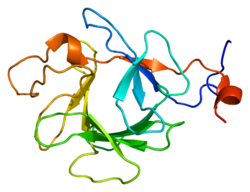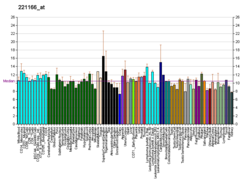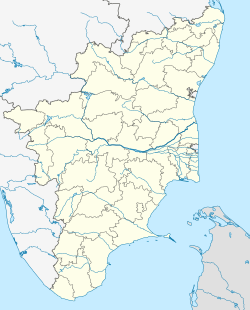섬유질 성장 인자 23
Fibroblast growth factor 23| FGF23 | |||||||||||||||||||||||||
|---|---|---|---|---|---|---|---|---|---|---|---|---|---|---|---|---|---|---|---|---|---|---|---|---|---|
 | |||||||||||||||||||||||||
| |||||||||||||||||||||||||
| 식별자 | |||||||||||||||||||||||||
| 별칭 | FGF23, ADHR, FGFN, HPDR2, HYPF, PHPTC, 섬유블래스트 성장 인자 23, HFTC2 | ||||||||||||||||||||||||
| 외부 ID | OMIM: 605380 MGI: 1891427 호몰로진: 10771 GeneCard: FGF23 | ||||||||||||||||||||||||
| |||||||||||||||||||||||||
| |||||||||||||||||||||||||
| 직교체 | |||||||||||||||||||||||||
| 종 | 인간 | 마우스 | |||||||||||||||||||||||
| 엔트레스 | |||||||||||||||||||||||||
| 앙상블 | |||||||||||||||||||||||||
| 유니프로트 | |||||||||||||||||||||||||
| RefSeq(mRNA) | |||||||||||||||||||||||||
| RefSeq(단백질) | |||||||||||||||||||||||||
| 위치(UCSC) | Chr 12: 4.37 – 4.38Mb | n/a | |||||||||||||||||||||||
| PubMed 검색 | [2] | [3] | |||||||||||||||||||||||
| 위키다타 | |||||||||||||||||||||||||
| |||||||||||||||||||||||||
섬유질 성장 인자 23 또는 FGF23은 인간에서 FGF23 유전자에 의해 인코딩되는 단백질이다.[4] FGF23은 인산염과 비타민D 대사 및 조절에 참여하는 섬유질 성장인자(FGF) 계열의 일원이다.[5][6]
함수
FGF23의 주요 기능은 플라즈마 내 인산염 농도의 조절인 것 같다. FGF23은 석회화 증가에 대응하여 골세포에 의해 분비된다. FGF23은 신장에 작용하여 근위부 관에 있는 나트륨-인산염 코탄스포터인 NPT2의 발현을 감소시킨다.[7] 따라서 FGF23은 칼슘의 재흡수를 감소시키고 인산염의 배설을 증가시킨다. [8]
FGF23은 또한 1알파-히드록실라제를 억제하여 비타민 D를 활성화하는 능력을 감소시키고 그 결과 칼슘 흡수를 저해할 수 있다.[6][9]
임상적 유의성
FGF23은 12번 염색체에 위치하며 3개의 엑손으로 구성되어 있다. 단백질 분해에 내성이 있는 단백질을 만드는 FGF23의 돌연변이는 FGF23의 활성도를 증가시키고 인간의 질병인산성 지배성 저인산 구루병에서 발견되는 신장인산손실로 이어진다. FGF23은 또한 종양 유발 골연화증후군인 종양 유도 골연화증을 유발하는 양성 중수성 중수성 중수종양과 같은 일부 종양 유형에 의해 과잉 생산된다.[10][11]
FGF23 활성도의 상실은 인산염 수치 증가와 가족성 종양 석회화의 임상 증후군으로 이어질 것으로 생각된다. 이 유전자는 자가우위성 저인산 구루병과 관련된 돌연변이에 의해 확인되었다.[12] FGF23이나 클로토 효소가 결핍된 생쥐는 고인산증으로 인한 조기 노화를 보인다.[13]
역사
2000년에 발견되기 전에, FGF23에 대해 표시된 기능을 이후에 수행하는 단백질이 존재한다는 가설이 제기되었다. 이 첨가 단백질은 인산염으로 알려져 있었다.[14] 장 및 신장 브러시 경계막 베시클 양쪽에서 나트륨 의존성 인산염 운반의 손상, 캘시트리올 생산 억제, 캘시트리올 분해 자극, 부갑상선 호르몬의 생산/배출 억제 등 여러 가지 효과가 설명되었다.
참조
- ^ a b c GRCh38: 앙상블 릴리스 89: ENSG00000118972 - 앙상블, 2017년 5월
- ^ "Human PubMed Reference:". National Center for Biotechnology Information, U.S. National Library of Medicine.
- ^ "Mouse PubMed Reference:". National Center for Biotechnology Information, U.S. National Library of Medicine.
- ^ Yamashita T, Yoshioka M, Itoh N (October 2000). "Identification of a novel fibroblast growth factor, FGF-23, preferentially expressed in the ventrolateral thalamic nucleus of the brain". Biochemical and Biophysical Research Communications. 277 (2): 494–8. doi:10.1006/bbrc.2000.3696. PMID 11032749.
- ^ Fukumoto S (2008). "Physiological regulation and disorders of phosphate metabolism--pivotal role of fibroblast growth factor 23". Internal Medicine. 47 (5): 337–43. doi:10.2169/internalmedicine.47.0730. PMID 18310961.
- ^ a b Perwad F, Zhang MY, Tenenhouse HS, Portale AA (November 2007). "Fibroblast growth factor 23 impairs phosphorus and vitamin D metabolism in vivo and suppresses 25-hydroxyvitamin D-1alpha-hydroxylase expression in vitro". American Journal of Physiology. Renal Physiology. 293 (5): F1577-83. doi:10.1152/ajprenal.00463.2006. PMID 17699549.
- ^ Jüppner H (April 2011). "Phosphate and FGF-23". Kidney International. 79 (121): S24-7. doi:10.1038/ki.2011.27. PMC 3257051. PMID 21346724.
- ^ Cha SK, Ortega B, Kurosu H, Rosenblatt KP, Kuro-O M, Huang CL (July 2008). "Removal of sialic acid involving Klotho causes cell-surface retention of TRPV5 channel via binding to galectin-1". Proceedings of the National Academy of Sciences of the United States of America. 105 (28): 9805–10. Bibcode:2008PNAS..105.9805C. doi:10.1073/pnas.0803223105. PMC 2474477. PMID 18606998.
- ^ Rodríguez-Ortiz ME, Rodríguez M (2015). "FGF23 as a calciotropic hormone". F1000Research. 4: 1472. doi:10.12688/f1000research.7189.1. PMC 4815615. PMID 27081473.
- ^ Zadik Y, Nitzan DW (February 2012). "Tumor induced osteomalacia: a forgotten paraneoplastic syndrome?". Oral Oncology. 48 (2): e9–10. doi:10.1016/j.oraloncology.2011.09.011. PMID 21985764.
- ^ Green D, Mohorianu I, Piec I, Turner J, Beadsmoore C, Toms A, et al. (December 2017). "MicroRNA expression in a phosphaturic mesenchymal tumour". Bone Reports. 7: 63–69. doi:10.1016/j.bonr.2017.09.001. PMC 5596358. PMID 28932769.
- ^ "Entrez Gene: FGF23 fibroblast growth factor 23".
- ^ Huang CL (May 2010). "Regulation of ion channels by secreted Klotho: mechanisms and implications". Kidney International. 77 (10): 855–60. doi:10.1038/ki.2010.73. PMID 20375979.
- ^ Strewler GJ (May 2001). "FGF23, hypophosphatemia, and rickets: has phosphatonin been found?". Proceedings of the National Academy of Sciences of the United States of America. 98 (11): 5945–6. doi:10.1073/pnas.11154898. PMC 33399. PMID 11371627.
추가 읽기
- Kiela PR, Ghishan FK (January 2009). "Recent advances in the renal-skeletal-gut axis that controls phosphate homeostasis". Laboratory Investigation; A Journal of Technical Methods and Pathology. 89 (1): 7–14. doi:10.1038/labinvest.2008.114. PMC 4292907. PMID 19029978.
- Silve C, Beck L (June 2002). "Is FGF23 the long sought after phosphaturic factor phosphatonin?". Nephrology, Dialysis, Transplantation. 17 (6): 958–61. doi:10.1093/ndt/17.6.958. PMID 12032180.
- Quarles LD (July 2003). "FGF23, PHEX, and MEPE regulation of phosphate homeostasis and skeletal mineralization". American Journal of Physiology. Endocrinology and Metabolism. 285 (1): E1-9. doi:10.1152/ajpendo.00016.2003. PMID 12791601.
- Fukagawa M, Nii-Kono T, Kazama JJ (July 2005). "Role of fibroblast growth factor 23 in health and in chronic kidney disease". Current Opinion in Nephrology and Hypertension. 14 (4): 325–9. doi:10.1097/01.mnh.0000172717.49476.80. PMID 15930999. S2CID 23555353.
- Imel EA, Econs MJ (September 2005). "Fibroblast growth factor 23: roles in health and disease". Journal of the American Society of Nephrology. 16 (9): 2565–75. doi:10.1681/ASN.2005050573. PMID 16033853.
- Liu S, Quarles LD (June 2007). "How fibroblast growth factor 23 works". Journal of the American Society of Nephrology. 18 (6): 1637–47. doi:10.1681/ASN.2007010068. PMID 17494882.
- White, Kenneth E.; Evans, Wayne E.; O'Riordan, Jeffery L.H.; Speer, Marcy C.; Econs, Michael J.; Lorenz-Depiereux, Bettina; Grabowski, Monika; Meitinger, Thomas; Strom, Tim M. (November 2000). "Autosomal dominant hypophosphataemic rickets is associated with mutations in FGF23". Nature Genetics. 26 (3): 345–8. doi:10.1038/81664. PMID 11062477. S2CID 38870810.
- White KE, Jonsson KB, Carn G, Hampson G, Spector TD, Mannstadt M, et al. (February 2001). "The autosomal dominant hypophosphatemic rickets (ADHR) gene is a secreted polypeptide overexpressed by tumors that cause phosphate wasting". The Journal of Clinical Endocrinology and Metabolism. 86 (2): 497–500. doi:10.1210/jc.86.2.497. PMID 11157998.
- Shimada T, Mizutani S, Muto T, Yoneya T, Hino R, Takeda S, et al. (May 2001). "Cloning and characterization of FGF23 as a causative factor of tumor-induced osteomalacia". Proceedings of the National Academy of Sciences of the United States of America. 98 (11): 6500–5. Bibcode:2001PNAS...98.6500S. doi:10.1073/pnas.101545198. PMC 33497. PMID 11344269.
- Bowe AE, Finnegan R, Jan de Beur SM, Cho J, Levine MA, Kumar R, Schiavi SC (June 2001). "FGF-23 inhibits renal tubular phosphate transport and is a PHEX substrate". Biochemical and Biophysical Research Communications. 284 (4): 977–81. doi:10.1006/bbrc.2001.5084. PMID 11409890.
- White KE, Carn G, Lorenz-Depiereux B, Benet-Pages A, Strom TM, Econs MJ (December 2001). "Autosomal-dominant hypophosphatemic rickets (ADHR) mutations stabilize FGF-23". Kidney International. 60 (6): 2079–86. doi:10.1046/j.1523-1755.2001.00064.x. PMID 11737582.
- Kruse K, Woelfel D, Strom TM, Storm TM (2002). "Loss of renal phosphate wasting in a child with autosomal dominant hypophosphatemic rickets caused by a FGF23 mutation". Hormone Research. 55 (6): 305–8. doi:10.1159/000050018. PMID 11805436. S2CID 46748089.
- Yamashita T, Konishi M, Miyake A, Inui K, Itoh N (August 2002). "Fibroblast growth factor (FGF)-23 inhibits renal phosphate reabsorption by activation of the mitogen-activated protein kinase pathway". The Journal of Biological Chemistry. 277 (31): 28265–70. doi:10.1074/jbc.M202527200. PMID 12032146.
- Saito H, Kusano K, Kinosaki M, Ito H, Hirata M, Segawa H, et al. (January 2003). "Human fibroblast growth factor-23 mutants suppress Na+-dependent phosphate co-transport activity and 1alpha,25-dihydroxyvitamin D3 production". The Journal of Biological Chemistry. 278 (4): 2206–11. doi:10.1074/jbc.M207872200. PMID 12419819.
- Bai XY, Miao D, Goltzman D, Karaplis AC (March 2003). "The autosomal dominant hypophosphatemic rickets R176Q mutation in fibroblast growth factor 23 resists proteolytic cleavage and enhances in vivo biological potency". The Journal of Biological Chemistry. 278 (11): 9843–9. doi:10.1074/jbc.M210490200. PMID 12519781.
- Larsson T, Zahradnik R, Lavigne J, Ljunggren O, Jüppner H, Jonsson KB (February 2003). "Immunohistochemical detection of FGF-23 protein in tumors that cause oncogenic osteomalacia". European Journal of Endocrinology. 148 (2): 269–76. doi:10.1530/eje.0.1480269. PMID 12590648.
- Campos M, Couture C, Hirata IY, Juliano MA, Loisel TP, Crine P, et al. (July 2003). "Human recombinant endopeptidase PHEX has a strict S1' specificity for acidic residues and cleaves peptides derived from fibroblast growth factor-23 and matrix extracellular phosphoglycoprotein". The Biochemical Journal. 373 (Pt 1): 271–9. doi:10.1042/BJ20030287. PMC 1223479. PMID 12678920.
이 기사는 공공영역에 있는 미국 국립 의학 도서관의 텍스트를 통합하고 있다.






